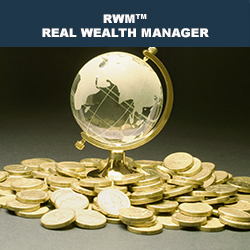Last updated: October 15 2019
Protecting Lifestyles: Inflation Matters

Most people need to generate the future income they require to sustain their lifestyle by saving money. Saving sooner in life is better. So is saving in tax-exempt or tax-deferred vehicles. But as wealth accumulates, preservation of value becomes an increasing concern. Two key eroders are taxes and professional fees. Also important is the cost of inflation, even at today’s relatively low rates. Here is why:
Consider that a basket of goods worth $100 in 1999, would cost $146.62 today. That’s an increase of 46.62%, based on a 1.93% annual average rate of inflation over that time period. What this also means is that $100 saved 20 years ago is now only worth about $67.30.
The Bank of Canada defines inflation to be “a persistent rise in the cost of living.” The Consumer Price Index (CPI) measures that cost of living. Over the past several years, the Bank of Canada has kept inflation at around 2%. So, when rates of return on investments exceed the CPI, the invested dollars remain “whole.” Optimal rates of return, however, must also provide  returns that exceed taxation and fees payable.
returns that exceed taxation and fees payable.
While inflation robs your money of its purchasing power over time, it does favours for the Taxman. A common example is called “bracket creep”. It works like this: in some provinces, tax brackets are not fully indexed to reflect the rate of inflation. Meanwhile, incomes tend to grow with the rate of inflation. In the absence of full indexing for inflation, your income can be pushed into a higher tax bracket, and you pay tax at a higher marginal tax rate. That means your money has already lost some ground, after tax, before you have a chance to invest it.
The value of your tax credits can be similarly reduced when income-tested ceilings are not indexed to inflation. The result is that your income is pushed into a “clawback zone” sooner, thereby cutting into the size of your refundable and non-refundable credits.
You’ll also get a smaller tax benefit from non-refundable tax credits when certain maximum threshold limits fail to be indexed to inflation; for example the $2,000 pension income amount, or the $5,000 maximum tuition transfer amount.
Investors are affected in other ways, too. When savers delay making their RRSP contributions, they not only miss out on the immediate tax reductions and the significant income deferral of today’s “whole dollars,” but they face a gap in potential tax sheltering. That’s because inflation erodes away the value of the unused RRSP contribution room.
But one of the most expensive taxation results for asset-rich investors is this: capital assets can be over-valued due to inflation. The CRA wins in a big way in those cases, by taxing inflated values on the disposition of the assets. This also happens because the adjusted cost base, upon which capital gains are calculated in the first place, is not indexed to inflation.
This should be of special concern to investors, in light of some election promises to increase capital gains inclusion rates to 75% (NDP) or 100% (Green Party). See our election promises chart.
So, what can investors do to hedge against inflation and protect their assets, in order to secure full purchasing power for today’s dollars in the future?
First, make sure you earn more money, year-over-year, than the rate of inflation. That’s easier for younger people to do, but those who are retired must make sure rates of return they receive will beat inflation rates in the short term. It’s tough to do when “safe” investments like GICs are barely paying interest at the inflation rate.
Stocks typically tend to fare better - however, they come with market volatility - something many seniors want to avoid as their recovery time horizons are shorter. Reducing investment costs will help, as will a sharper eye on tax-savers, like income splitting and timing to avoid marginal tax rate spikes.
Real estate is a good hedge against inflation because, generally, the value of real estate rises in inflationary times. Some seniors may wish to rethink their downsizing dreams and hold on to their residences for these reasons.
While the rate of inflation is largely out of the control of investors, it can be mitigated with a sound tax-saving strategy. The objective is to increase after-tax cash flow in the short term and protect asset values from taxation over the long run.
Here are six strategies investors and their advisors can discuss:
- Monitor net income levels of all family members carefully to make sure they are not exposed to clawback zones. If they are close to one, consider an RRSP contribution, if eligible.
- Split family income to stay out of the next tax bracket. This can be done through pension income splitting for those with eligible pension income, for example. But be aware of the Attribution Rules which can attribute back income to the higher earner in many cases.
- Time the dispositions of your capital assets. You might decide, for example, to sell one half of your duplex in the current tax year and one half in the next to keep income levels in lower tax brackets in both years.
- Increase tax refunds by maximizing deductions and credits; then invest them in a TFSA to avoid taxes completely in the future.
- In inflationary times, rethink debt management. When the value of your rental property, for example, rises faster than interest rates, the value of your debt actually decreases proportionately. While this goes against conventional thinking, it may actually make sense to pay off this deductible debt over a longer time horizon. But do pay off expensive, non-deductible debt as soon as possible.
- Keep an eye on carrying costs: interest and professional fees paid.
THE MONEY MORAL: It’s most important to play defensively to beat inflation in building sustainable family wealth over time. Paying closer attention to rates of return and the costs of debt is critical; so is reducing the cost of fees and taxation, so that you are always working with dollars that are as “whole” as possible. Your future lifestyle will depend on it.
Evelyn Jacks is President of Knowledge Bureau and author of 54 books on personal tax planning and family wealth management. They can be found at www.knowledgebureau.com.
Additional educational resources: Help clients employ strategies to employ wealth eroders at all life stages as a Real Wealth Manager™. You’ll learn to lead a collaborative team of professionals in helping your clients accumulate, grow, preserve and transition sustainable wealth.
Statistics Canada, as referenced on the Bank of Canada website.
COPYRIGHT OWNED BY KNOWLEDGE BUREAU INC., 2019.
UNAUTHORIZED REPRODUCTION, IN WHOLE OR IN PART, IS PROHIBITED.

